Planetary Science
-
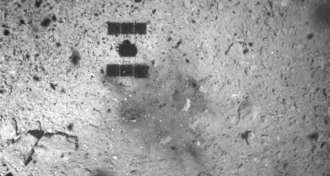 Planetary Science
Planetary ScienceRyugu is probably a chip off one of these two other asteroids
Japan’s Hayabusa2 team has narrowed down the asteroid Ryugu’s origins based on its color.
-
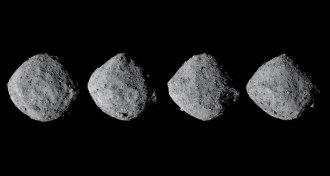 Planetary Science
Planetary ScienceSurprising astronomers, Bennu spits plumes of dust into space
Bennu spews dust from its rocky surface, which may be a new kind of asteroid activity.
-
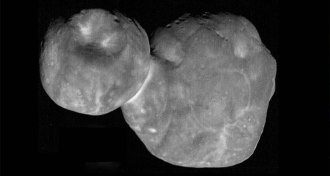 Planetary Science
Planetary ScienceUltima Thule may be a frankenworld
The first geologic map of Ultima Thule shows it might be made of many smaller rocks that clumped together under the force of their own gravity.
-
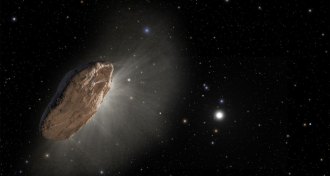 Astronomy
Astronomy3 explanations for ‘Oumuamua that aren’t alien spaceships
Astronomers are coming up with some creative ideas to explain the weird behavior of the first known interstellar object.
-
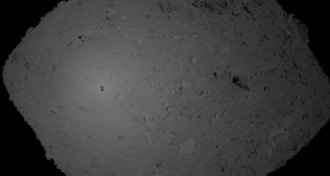 Planetary Science
Planetary ScienceHayabusa2 just tried to collect asteroid dust for the first time
The Japanese Hayabusa2 spacecraft touched down on asteroid Ryugu and attempted to gather a sample of its rock to bring back to Earth.
-
 Planetary Science
Planetary ScienceNeptune’s smallest moon may be a chip off another moon
Neptune’s tiniest moon probably formed when a comet hit a larger moon.
-
 Planetary Science
Planetary ScienceMars’ lake may need an underground volcano to exist
If a lake under Martian ice is real, there must be a subsurface magma pool to keep conditions warm enough for water to remain liquid, scientists say.
-
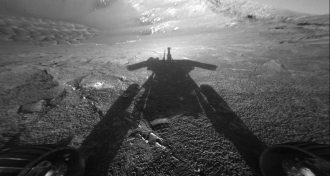 Planetary Science
Planetary ScienceAfter 15 years on Mars, it’s the end of the road for Opportunity
After 15 years of exploring Mars, a dust storm led to the demise of NASA’s longest-lived rover.
-
 Planetary Science
Planetary ScienceA basketball-sized rock hit the moon during the last lunar eclipse
Professional and amateur astronomers joined forces to analyze the impact.
-
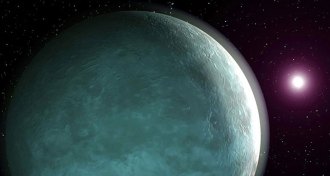 Astronomy
AstronomyA space rock collision may explain how this exoplanet was born
Simulations suggest a planet roughly 2,000 light-years away formed when two space rocks collided, supporting the idea that such events are universal.
By Jeremy Rehm -
 Planetary Science
Planetary ScienceTitan’s oddly thick atmosphere may come from cooked organic compounds
Saturn’s moon Titan might get some of its hazy atmosphere by baking organic molecules in a warm core.
-
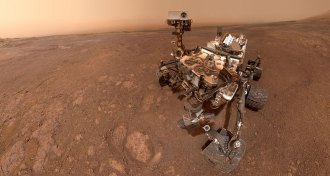 Planetary Science
Planetary ScienceNASA’s Curiosity Mars rover weighed the mountain it’s climbing
Curiosity measures gravity as it drives, allowing scientists to weigh Mount Sharp and determine that the rock is less dense than expected.